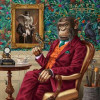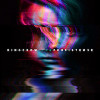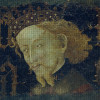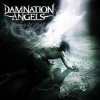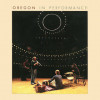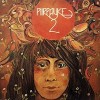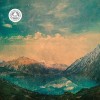Loading cart

To The North

"Since returning to music from an eight year hiatus in 2013, Kari Rueslåtten is definitely making up for lost time. 2014 saw the release of Time to Tell, her finest solo album to date, with the soft wintry melodies and her beautiful voice making it one of the highlights of the 2014- and later in the year she teamed up with Anneke Van Giersbergen and Liv Kristine to tour as The Sirens – playing a range of material from her previous band The 3rd and the Mortal and her solo career. And only 18 months after Time to Tell she’s already back with her sixth solo album To to North, another beautiful album with a lovely atmosphere, sounding new while hearkening back to previous efforts, and now we’re in December I can confidently say is my album of the year.
As usual with Kari, the album is centred around her beautiful voice – her soft ethereal vocals with a Nordic trill areas lovely as ever throughout To the North, a constant on a rather varied album. The sound throughout is crystalline, the production really accentuates her voice, and each of the instruments is clear as can be. The first track Battle Forevermore begins as a soft piano led ballad, with a beautifully sullen voice recounting the story of a love gone sour, with the swell of guitar in the middle building an electric, almost intense atmosphere. The electric guitar throughout To the North was almost absent in the former album Time to Tell, and it adds a lot throughout the album – as on the following rockier piece Mary’s Song – the guitar melodies and subtle synths creating a modern sounding track reminiscent somewhat of the Mesmerized album, with touches of Spindelsinn.
The next handful of tracks, show her folkier side, one she’s shined at since her career first began in The 3rd and the Mortal days. The acoustic guitar, wind instruments and subtle percussion on Three Roses In My Hands make for a sombre piece of Nordic sounding folk, while the electric guitar comes in with a soft reverb-y wash in Dance With The King, a more mordern piece but another where her folk side is exemplary in the lyrics and her soft voice.
Letting Go sees a return to the flirtations with electronic elements as explored on Pilot, drum loops and a slight effect on the vocals over a supremely catchy guitar riff drenched in delay see a small return to that experimentalism, with tremolo picked guitars and clashing drums coming in at the track’s great climax. Arrow in My Heart is the highlight of the album, the soft guitar creates such a lovely atmosphere, carried along by simple, but perfectly placed drums serving to create a perfect backdrop to Kari’s voice which is as beautiful as it’s ever been in her whole career – her intonation on each line is perfect, especially the high notes near the end of the song. The bittersweet lyrics are lovely, and with the emotion in each one, this is the one you’ll be playing on repeat after the album ends.
The last two tracks create a dark, brooding atmosphere that’s almost tangible. The penultimate, Turn, Turn, Turn is a cover of The Byrds track, but inverted from it’s upbeat pop to dark, folky moroseness. The crackle of distortion from the guitar creates a sombre fog, exemplified by a darker side to her voice and the plod of the piano that make it an intospective sullen, brooding piece. The closer To the North is the most atmospheric of the bunch, the otherworldly synths and slow brooding guitars create a thick icy atmosphere akin to being lost in a snowstorm. Her voice takes on a folky Nordic tone once again, and with the layering of synth and guitar it’s the closest in sound to Tears Laid in Earth than anything she’s done in the intervening years since leaving The 3rd and the Mortal. The guitar solo near the end is electrifying, and it’s a cold, wintry closer that more than lives up to it’s name, true Nordic beauty.
With such a short gap since Time to Tell, one could have been forgiven for anticipating a continuation of that album, but she’s pushed her sound once again. She takes elements of her previous albums, and even her time from The 3rd and the Mortal, but adds new elements and a crystalline modern production to create a fresh and brilliant release. Overall the album seems more sullen than Time to Tell, an upbeat album in places, but with a brooding atmosphere, more variation and that great production it’s a worthy follow up. And with hauntingly beautiful tracks such as Battle Forevermore, Arrow in My Heart and the title track in particular, it’s easy to fall in love with To the North, so much so that it’s certainly my album of the year." - Swirls Of Noise


